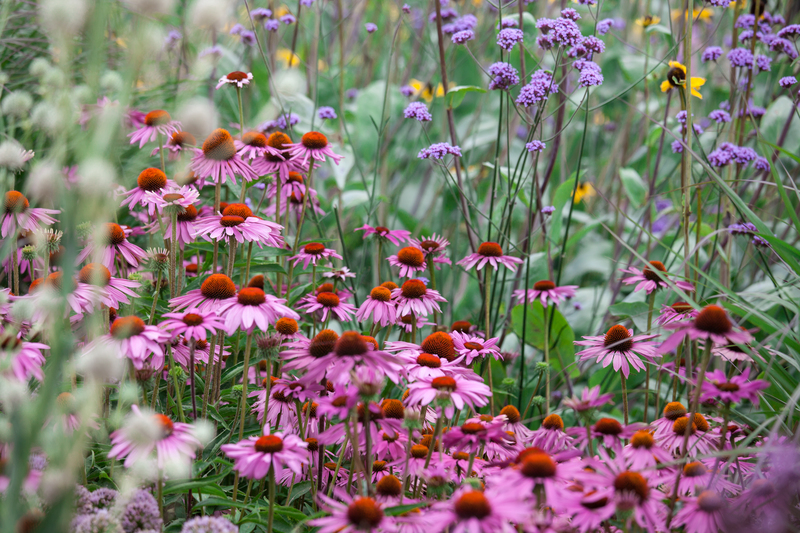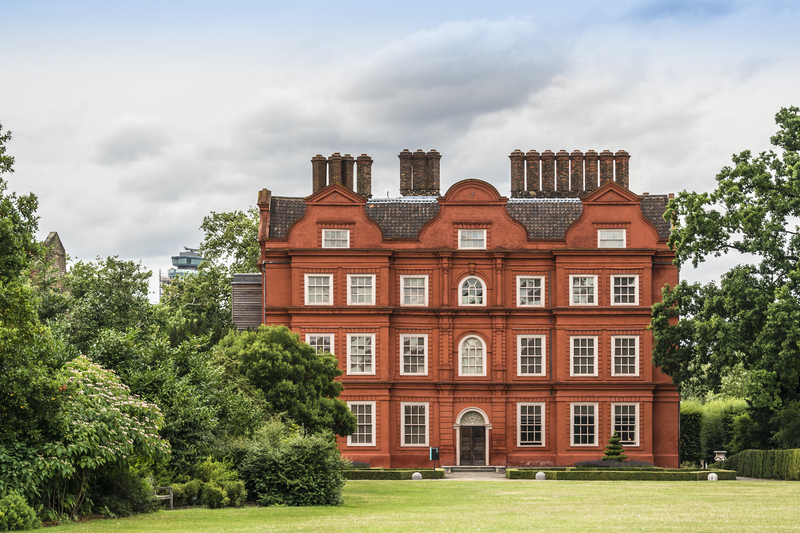Container Gardening for Beginners
Posted on 29/06/2025
Container Gardening for Beginners: Your Complete Guide
Have you dreamed of growing your own flowers, herbs, or vegetables, but felt limited by space or experience? Container gardening offers a flexible, fun, and easy way for beginners to enjoy gardening in any living situation. Whether you have a small balcony, a sunny windowsill, or just a doorstep, you can create a thriving garden in pots and planters!
What Is Container Gardening?
Container gardening is the practice of growing plants in containers instead of planting them directly in the ground. These containers can be pots, boxes, barrels, baskets, or anything else that can hold soil and provide adequate drainage.
- Perfect for urban spaces or apartments without yards
- Highly flexible--move containers to catch sunlight or decorate your space
- Easier to manage soil, water, and pests
Container gardening for beginners is an excellent entry point into the world of gardening: it requires less commitment than traditional gardening, and you can start with just a single pot!
Benefits of Container Gardening
Why should you consider starting your own container garden? Here are some of the top advantages of container gardening:
- Space-saving: Ideal for balconies, patios, and even windowsills
- Great for renters: No need to alter the ground or landscape
- Control over soil quality: Choose the best soil for your plants
- Easier pest control: Isolating plants can reduce pest transfer
- Mobility: Move containers to the best location depending on weather or sunlight
- Extend the growing season: Bring sensitive plants indoors

Getting Started: Choosing the Right Containers
For those new to container gardening, picking the right pots is essential. The type and size of containers you choose will influence plant health and growth.
Materials
- Terracotta - Classic look, great for herbs, dries quickly
- Plastic - Lightweight, economical, holds moisture better
- Ceramic - Decorative, but heavier and can crack in frost
- Wooden boxes - Excellent for vegetables, ensure rot resistance
- Metal containers - Durable but can heat up quickly
Container Size
Bigger is often better! Small containers dry out faster and restrict root growth. For vegetables or fruiting plants, pick a container at least 12-18 inches in diameter and depth. Herbs and annual flowers may thrive in smaller pots, but always check your plant's requirements.
Drainage Is Critical
No drainage, no success. Always ensure your containers have holes at the bottom; poor drainage can cause root rot and kill your plants.
Choosing the Best Soil for Container Gardening
Never use garden soil in containers! It's often too heavy, compacts easily, and may bring disease or weeds. Instead, look for potting mixes designed for containers, which are lightweight and formulated to retain the right amount of moisture. For specialized needs, like succulents or orchids, choose a mix formulated for their unique requirements.
- General-purpose potting mix - Good for most flowers, vegetables
- Moisture-control potting mix - Ideal for plants sensitive to over/underwatering
- Seed starting mix - Finer texture, encourages root growth for seedlings
Selecting Plants for Your Container Garden
Choosing the right plants for container gardening is the fun part! Beginners should start with easy, reliable plants. Always consider your local climate, available sunlight, and how much time you can spend caring for your garden.
Best Vegetables for Container Gardening
- Lettuce and salad greens
- Cherry tomatoes
- Peppers
- Radishes
- Carrots (choose shorter varieties)
- Herbs: basil, parsley, thyme, mint, chives
Top Flowers for Beginners
- Marigolds
- Petunias
- Begonias
- Geraniums
- Pansies
- Impatiens
Fruit Options for Pots
- Strawberries
- Blueberries (choose dwarf varieties)
- Lemons or limes (dwarf or patio trees)
- Figs
Pro tip: Always match plant choices to sun exposure. Vegetables and most flowers need at least 6 hours of direct sunlight per day. For shadier spots, look for shade-tolerant varieties.
Planting Your Container Garden: Step-by-Step
Follow these simple steps to set up your first container garden:
- Fill your container: Add potting mix, leaving about 1 inch at the rim for watering.
- Arrange your plants: Loosen roots gently, position tall plants in the center or back, trailing plants near the edge.
- Plant at the right depth: Cover roots but don't bury stems too deeply.
- Water thoroughly: Saturate the soil immediately after planting.
- Place in proper light: Move pots to their permanent location based on sun requirements.
- Labeled care: Keep plant labels for care instructions.
Remember: Good spacing helps prevent disease and allows air circulation. Don't overcrowd!
Container Garden Maintenance Tips for Beginners
Keeping your potted plants healthy requires a few key tasks:
Watering
Consistent watering is essential. Containers dry out more quickly than garden beds. Check soil moisture daily--stick your finger in up to your first knuckle; if it feels dry, water deeply until water drains from the bottom.
- Morning watering is best
- Don't let pots sit in collected water
- Group containers to create microclimates and reduce drying
Feeding Your Plants
Fertilizer is a must in container gardening. Frequent watering washes nutrients away. Use a slow-release fertilizer according to label directions, or liquid feed every two weeks.
Pruning and Deadheading
Remove faded flowers (deadhead) to encourage more blooms, and prune back leggy growth to keep your container garden tidy and productive.
Refreshing and Repotting
- Add fresh soil: Top off containers each season to replenish nutrients.
- Repot perennials: Move to larger pots as roots fill their current home.
Pest Management
Watch for trouble! Regularly inspect leaves for signs of pests or disease. Remove affected leaves, wash with a gentle spray, or use organic solutions such as neem oil if needed.
Creative Ideas for Container Gardening
Container gardening for beginners isn't just practical--it's also a way to express your creativity! Mix and match colors, textures, and heights. Try using unusual containers, like old buckets, teapots, or crates, for a unique look.
- Create a themed herb pot--basil, oregano, thyme, and parsley together
- Mix flowers and veggies for color and harvest: marigolds deter pests while tomatoes grow
- Vertical gardening: Stack pots or use hanging baskets to maximize space
- Succulent arrangements: Low maintenance and perfect for sun-soaked spots
Design Principles
Use the classic "thriller, filler, spiller" method:
- Thriller - Tall, dramatic plant in the center (e.g., ornamental grass)
- Filler - Midsize, bushy plants to fill space (e.g., petunias)
- Spiller - Trailing plants cascading over the edge (e.g., ivy or sweet potato vine)
Overcoming Common Container Gardening Challenges
Even the best beginner container gardens face obstacles. Here's how to tackle the most frequent problems:
-
Wilting or yellow leaves?
- Check for underwatering or overwatering
- Ensure good drainage and adjust watering frequency
-
Pests like aphids or spider mites?
- Spray with water, use insecticidal soap, or introduce beneficial bugs like ladybugs
-
Plants not flowering or fruiting?
- Check for enough sunlight
- Feed regularly and avoid overcrowding
-
Containers drying out too quickly?
- Try larger pots or relocate to partial shade
- Mulch the soil surface to hold moisture

Frequently Asked Questions (FAQs) About Container Gardening for Beginners
How often should I water my container plants?
In hot weather, daily watering might be needed. Always check the soil moisture first. The goal is consistently moist, but not soggy soil.
Do all containers need drainage holes?
Yes! This prevents water-logging and root rot. If your container doesn't have holes, add them yourself or use it as a decorative "cachepot" with an inner pot that drains well.
When should I fertilize my potted plants?
Use a slow-release fertilizer when planting and supplement with a balanced liquid fertilizer every 2-4 weeks during the growing season.
Can I grow perennials in containers?
Many perennials will thrive in pots, but large ones may outgrow their space or need winter protection in cold climates.
Take the First Step: Start Your Own Container Garden Today!
Whether you want to grow fresh vegetables, fragrant herbs, or colorful blooms, container gardening for beginners makes it possible for anyone--regardless of space or skill level. As you experiment, you'll gain confidence and skills, and your little garden can grow and change with you.
- Start simple: Pick one or two pots and some easy plants
- Observe and learn: Note what works best in your unique space
- Enjoy the process--and the rewards of homegrown beauty or food!
Ready to begin? Gather your supplies, pick your plants, and embrace the joy of container gardening. In just a few weeks, you'll have lush, thriving pots--and a new gardening hobby to love!

